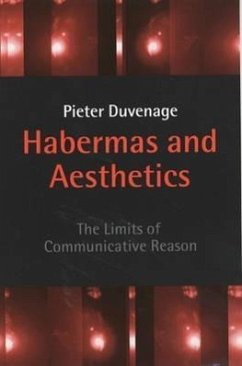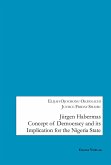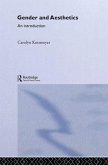While Habermas's philosophy of communicative action is well known among philosophers and social scientists, his aesthetics - that is, his views on art, literature, and culture - has received little attention. In his important new study, Pieter Duvenage fills this gap and shows that Habermas's work on aesthetics, far from being marginal to his core concerns, is central to understanding and evaluating his entire theoretical enterprise. Duvenage reconstructs Habermas's aesthetics in terms of two intellectual phases. In the first, Habermas follows an open-ended model which emphasizes the communicative and societal relevance of art. In the second, which correlates with his linguistic turn in the 1970s, the idea of a communicative aesthetics is worked out in terms of a theory of rationality. In this process Habermas assigns aesthetic rationality to a more restricted place within his overall model of communicative rationality. This position, the fate of aesthetics, is further elaborated in his debate with postmodern thinkers. In the last part of the study Duvenage offers a critical perspective on the role of aesthetics in Habermas's work and proposes possible alternatives. He contrasts Habermas's early writings on aesthetics, which viewed art as a material force for public illumination, with his more mature writings, which narrowly revolve around art as a form of subjective expression. Duvenage shows that Habermas's later work offers a third, albeit undeveloped, alternative that suggests a convergence of these two views. This book, which exhibits tremendous range and scholarship, will interest scholars of Habermas, Critical Theory, aesthetics, German and French philosophy, cultural and media studies, and those interested in modern art and its relation to modernity
Hinweis: Dieser Artikel kann nur an eine deutsche Lieferadresse ausgeliefert werden.
Hinweis: Dieser Artikel kann nur an eine deutsche Lieferadresse ausgeliefert werden.








